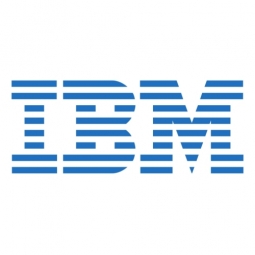Technology Category
- Functional Applications - Computerized Maintenance Management Systems (CMMS)
- Platform as a Service (PaaS) - Application Development Platforms
Applicable Industries
- Buildings
- Finance & Insurance
Applicable Functions
- Maintenance
- Product Research & Development
Use Cases
- Inventory Management
- Onsite Human Safety Management
Services
- Cloud Planning, Design & Implementation Services
- Training
About The Customer
Ashurst is a major international law firm that employs more than 3,300 people across 16 countries. The firm advises corporates, financial institutions, and governments. Its core businesses are in corporate, finance, dispute resolution, and the development and financing of assets in the energy, resources, and infrastructure sectors. In November 2013, Ashurst and Ashurst Australia (formerly Blake Dawson) merged to form one global team. The merger almost doubled the firm's headcount, opening up new business opportunities but also presenting significant challenges in human capital management.
The Challenge
Ashurst, a leading international law firm, faced a significant challenge after a major merger that almost doubled its size. The firm's HR function aimed to transform its operations to support the ongoing strategic growth objectives. The merger presented challenges in managing talent, developing skills, and rewarding performance across the global business. Each part of the business had its own systems and processes for managing absences, tracking performance, and rewarding success. This led to increased manual effort and cost, reduced ability to ensure globally consistent definitions of human capital management metrics, and difficulty in generating comprehensive reports. The firm also faced challenges in answering important questions related to employee skillsets, retention, and compensation policies across the organization.
The Solution
To address these challenges, Ashurst decided to build standardized global processes for managing talent, developing skills, and rewarding performance. The firm evaluated the market for a new human capital management platform and selected the Oracle Human Capital Management Cloud solution as the basis for a new, integrated way of working. This cloud solution helped Ashurst avoid the maintenance and management costs associated with managing and securing an on-premises solution. To help migrate its operations to a single, global Oracle solution, Ashurst engaged an expert team from IBM Global Business Services. The firm is launching HR self-service, a phase of the project targeted for completion by September 2015. In parallel, Ashurst and IBM Global Business Services are collaborating on work streams for additional components of the Oracle HCM Cloud solution, including Oracle Talent Management and Oracle Workforce Rewards.
Operational Impact
Quantitative Benefit

Case Study missing?
Start adding your own!
Register with your work email and create a new case study profile for your business.
Related Case Studies.

Case Study
Energy Saving & Power Monitoring System
Recently a university in Taiwan was experiencing dramatic power usage increases due to its growing number of campus buildings and students. Aiming to analyze their power consumption and increase their power efficiency across 52 buildings, the university wanted to build a power management system utilizing web-based hardware and software. With these goals in mind, they contacted Advantech to help them develop their system and provide them with the means to save energy in the years to come.

Case Study
Intelligent Building Automation System and Energy Saving Solution
One of the most difficult problems facing the world is conserving energy in buildings. However, it is not easy to have a cost-effective solution to reduce energy usage in a building. One solution for saving energy is to implement an intelligent building automation system (BAS) which can be controlled according to its schedule. In Indonesia a large university with a five floor building and 22 classrooms wanted to save the amount of energy being used.

Case Study
Powering Smart Home Automation solutions with IoT for Energy conservation
Many industry leaders that offer Smart Energy Management products & solutions face challenges including:How to build a scalable platform that can automatically scale-up to on-board ‘n’ number of Smart home devicesData security, solution availability, and reliability are the other critical factors to deal withHow to create a robust common IoT platform that handles any kind of smart devicesHow to enable data management capabilities that would help in intelligent decision-making

Case Study
Real-time In-vehicle Monitoring
The telematic solution provides this vital premium-adjusting information. The solution also helps detect and deter vehicle or trailer theft – as soon as a theft occurs, monitoring personnel can alert the appropriate authorities, providing an exact location.“With more and more insurance companies and major fleet operators interested in monitoring driver behaviour on the grounds of road safety, efficient logistics and costs, the market for this type of device and associated e-business services is growing rapidly within Italy and the rest of Europe,” says Franco.“The insurance companies are especially interested in the pay-per-use and pay-as-you-drive applications while other organisations employ the technology for road user charging.”“One million vehicles in Italy currently carry such devices and forecasts indicate that the European market will increase tenfold by 2014.However, for our technology to work effectively, we needed a highly reliable wireless data network to carry the information between the vehicles and monitoring stations.”

Case Study
Protecting a Stadium from Hazardous Materials Using IoT2cell's Mobility Platform
There was a need for higher security at the AT&T Stadium during the NFL draft. There was a need to ensure that nuclear radiation material was not smuggled inside the stadium. Hazmat materials could often be missed in a standard checkpoint when gaining entry into a stadium.








